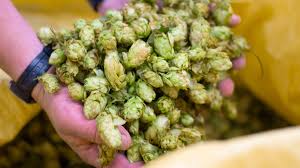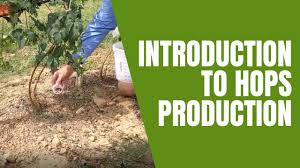How to Start a Successful Hop Farming Operation
Starting a Successful Hop Farming Operation
Hop farming is a profitable and rewarding agricultural venture, but it requires careful planning, investment, and ongoing management. Hops are primarily used in the brewing industry to add flavor, aroma, and bitterness to beer. Below are the key steps to starting a successful hop farm:
Step 1: Research and Planning
Before diving into hop farming, you need to conduct thorough research. Consider:
- Market Demand: Determine the demand for hops in your region and beyond. The craft beer industry is booming, and many breweries prefer locally grown hops.
- Variety Selection: Choose hop varieties that are suitable for your climate, soil, and market needs. Common varieties include Cascade, Centennial, Chinook, and Citra.
- Business Model: Decide whether you will sell directly to breweries, home brewers, or wholesalers.
Step 2: Land Selection and Preparation
- Climate and Soil: Hops require well-drained soil with a pH between 6.0 and 7.5. They thrive in regions with long daylight hours and moderate temperatures.
- Land Size: Start with at least one acre, which can support approximately 800–1,200 hop plants.
- Trellis System: Hops are climbing plants that grow up to 20 feet high, so you’ll need a sturdy trellis system. Wooden poles and steel cables are commonly used.
- Irrigation and Drainage: Drip irrigation is the best method to ensure consistent moisture without overwatering.
Step 3: Planting and Cultivation
- Planting Rhizomes: Hops are usually propagated from rhizomes (root cuttings) planted in early spring.
- Nutrient Management: Fertilize with nitrogen, potassium, and phosphorus to support healthy growth.
- Pest and Disease Control: Common threats include spider mites, aphids, and powdery mildew. Integrated pest management (IPM) strategies can help keep pests at bay.
- Pruning and Training: Young bines must be trained to grow along the trellis. Regular pruning ensures better air circulation and reduces disease risks.
Step 4: Harvesting and Processing
- Timing: Hops are ready for harvest between late summer and early fall. Signs of maturity include a strong aroma and a slightly sticky texture.
- Harvesting Methods: Handpicking is labor-intensive but ideal for small-scale farms, while mechanical harvesters are used for large-scale operations.
- Drying and Packaging: Hops need to be dried to a moisture content of around 8-10% before packaging in vacuum-sealed bags for storage and transportation.
Step 5: Marketing and Selling Your Hops
- Local Breweries: Develop relationships with craft breweries, as they often prefer fresh, local hops.
- Homebrewers: Selling in small batches to homebrewers can be profitable.
- Wholesale Buyers: Large distributors buy in bulk but may require consistent supply and certifications.
- Online Sales: Consider selling dried hops via an e-commerce store or marketplaces like Etsy and Amazon.
Finding an Experienced Farming Business Plan Writer
A well-crafted business plan is essential for securing funding, managing farm operations, and scaling your hop farm. Here’s how to find an expert farming business plan writer:
Where to Look for a Farming Business Plan Writer
- Agricultural Consultants: Many farming consultants offer business planning services and can provide industry-specific insights.
- Local Cooperative Extension Services: University-affiliated agricultural programs often have experts who can assist with business planning.
- Business Development Centers: Organizations like the Small Business Administration (SBA) or SCORE offer mentorship and resources for writing farming business plans.
- Networking in Farming Communities: Join farming associations, Facebook groups, and online forums where experienced farm business plan writers may be recommended.
What to Look for in a Farming Business Plan Writer
- Experience in Agriculture: Ensure the writer has experience in the farming industry, particularly in hop cultivation.
- Knowledge of Financial Planning: The plan should include financial projections, budgeting, and funding strategies.
- Understanding of Market Trends: A good business plan writer should be able to analyze market demand and pricing strategies.
- Sample Work and Reviews: Ask for samples of previous business plans and check reviews from past clients.
- Customization: The writer should tailor the business plan to your specific goals, land, and market.
How to Attract Loyal Customers Quickly
Building a loyal customer base is key to the long-term success of your hop farming operation. Below are strategies to attract and retain customers:
Step 1: Define Your Unique Selling Proposition (USP)
- What makes your hops different? It could be organic certification, rare hop varieties, or sustainable farming practices.
- Communicate your farm’s story to create an emotional connection with customers.
Step 2: Create a Strong Online Presence
- Website: Build a professional website showcasing your farm, products, pricing, and contact details.
- Social Media: Engage potential customers on platforms like Instagram, Facebook, and LinkedIn with behind-the-scenes content, harvesting videos, and customer testimonials.
- Email Marketing: Collect email addresses and send regular updates, promotions, and brewing tips to keep customers engaged.
Step 3: Establish Direct Sales Channels
- Farmers’ Markets: Sell directly to local homebrewers and beer enthusiasts.
- Subscription Models: Offer monthly or seasonal hop subscriptions for breweries and homebrewers.
- Collaborate with Breweries: Partner with local breweries to create exclusive brews using your hops.
Step 4: Offer Exceptional Customer Service
- Respond promptly to inquiries.
- Offer bulk discounts or loyalty programs.
- Provide educational resources on hop usage and storage.
Step 5: Leverage Word-of-Mouth and Influencer Marketing
- Partner with craft beer influencers and bloggers to review your hops.
- Encourage satisfied customers to leave testimonials and reviews.
Step 6: Attend Trade Shows and Networking Events
- Join hop farming associations and participate in beer and brewing festivals to connect with potential buyers.
- Attend industry events like the Craft Brewers Conference to showcase your hops.
Final Thoughts
Starting a hop farming operation requires a combination of agricultural expertise, business strategy, and marketing efforts. By conducting thorough research, preparing a strong business plan, and implementing an effective sales strategy, you can establish a profitable hop farm.
If you need professional guidance, hiring an experienced farming business plan writer can provide you with a solid foundation to secure funding and scale your operations. Additionally, attracting loyal customers quickly depends on creating a unique brand, leveraging digital marketing, and forming strong relationships with breweries and homebrewers.
With the right approach, your hop farming business can thrive in the growing craft beer industry. 🍻🌿



